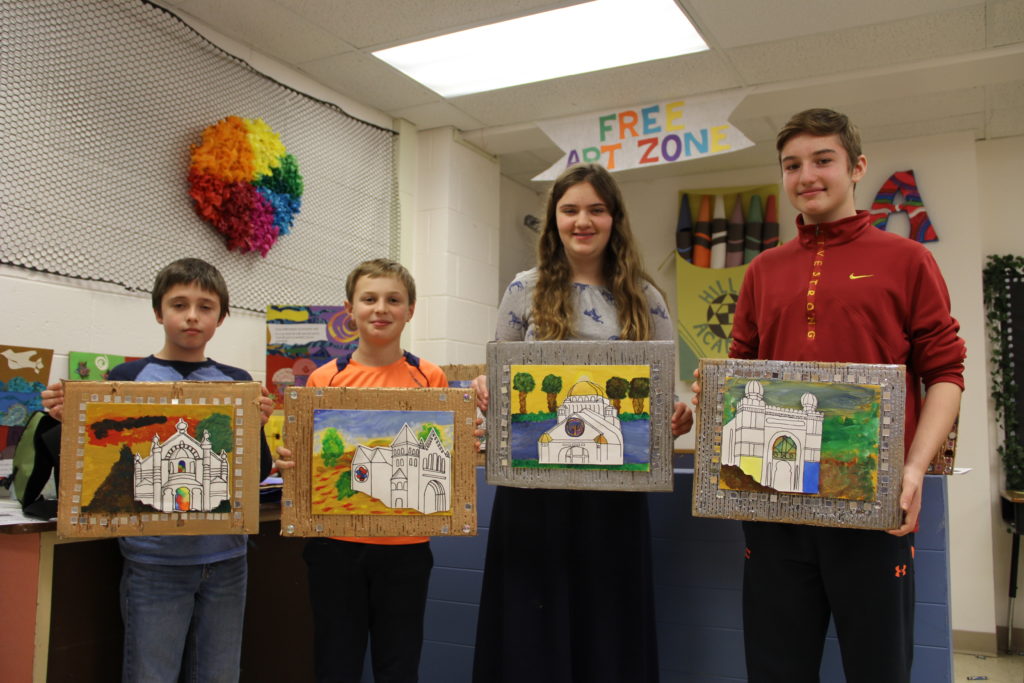WHITEFISH BAY – Each of the 11 pieces of art shows us what a synagogue looked like, pre-World War II, with its image surrounded by pieces of glass.
It’s an effort to remember and connect with Kristallnacht, often referred to in English as the “Night of Broken Glass.” Kristallnacht marks not just broken glass but a wave of violent anti-Jewish attacks on Nov. 9-10, 1938, in Germany and elsewhere.
Students at Bader Hillel Academy here worked with assistance from art teacher Jacqueline Cabessa, who said only one of the synagogues in their art project is still standing.

Baden-Baden synagogue in Germany, by Jonathan Crawford, 11, of Bader Hillel Academy. After many area Jews were deported to Dachau, a mob set fire to the synagogue. Its remains were used to pave a road, according to YadVashem.org. Photo by Rob Golub.
“We went back to the very old pictures before they were destroyed,” she said, noting the photo quality often degraded as she enlarged the pictures. They did their best to get things right.
“They were very pixely,” she said.
The mixed media artwork was part of the Sunday, Nov. 6 Kristallnacht commemoration program put on by the Coalition for Jewish Learning and the Nathan and Esther Pelz Holocaust Education Resource Center (HERC) of the Milwaukee Jewish Federation, held at the Jewish Home & Care Center, 1410 N. Prospect Ave., Milwaukee. Students spoke about their art at the event, which was part of a larger months-long initiative called Repairing the Glass, which included educators visiting schools and Skype with a rabbi in Germany.
“As the field of Holocaust education evolves and, at the same time, as the number of survivors who can share with us their personal experiences dwindles, we have to find innovative ways to teach the history of the Holocaust,” explained Shay Pilnik, executive director of HERC, in a statement.
“The project was really interesting,” said Ariel Lotman, 13, noting that she got to learn some history. Rebecca Kalmar, 13, said she felt having artwork represent Kristallnacht is “pretty powerful.”
And Phillip Maiman, 11, said that the glass pieces around each synagogue symbolizes the broken glass of Kristallnacht.
The synagogues represented in the art tend to have been designed with style, some with an apparent Russian or Middle Eastern influence.
Cabessa said, “It teaches them that there was a beautiful Jewish community, in beautiful settings.”
* * *
About Kristallnacht
Nazi Propaganda Minister Joseph Goebbels suggested that “world Jewry” had conspired to commit an assassination. He announced that “the Führer has decided that … demonstrations should not be prepared or organized by the Party, but insofar as they erupt spontaneously, they are not to be hampered.” Goebbels’ words appear to have been taken as a command for unleashing violence. Many Jews were arrested or killed and 267 synagogues were destroyed.


